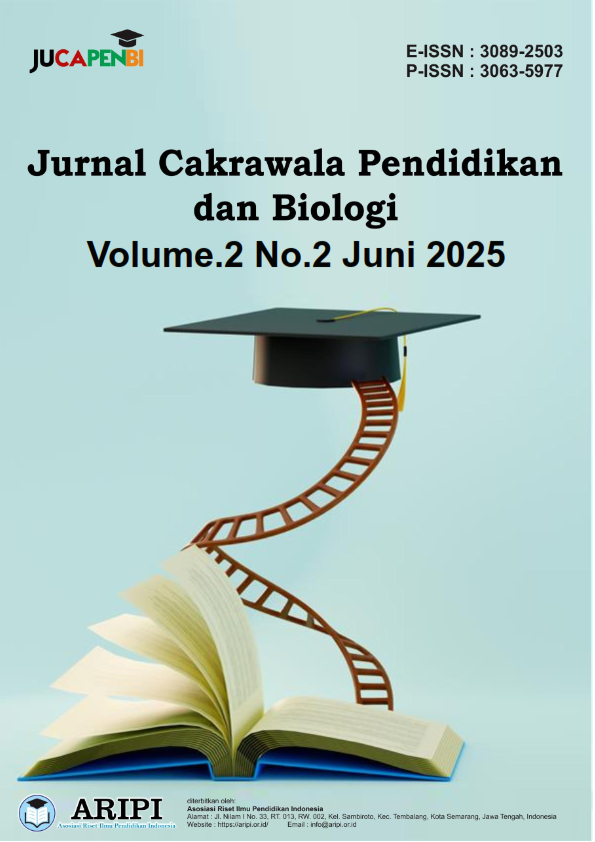The Effectiveness of Miro Application to Enhance 8th Grade Students’ Writing Skill of Descriptive Text in SMPN 2 Sutojayan
DOI:
https://doi.org/10.61132/jucapenbi.v2i2.293Keywords:
Miro Application, Descriptive Text, Writing Skill Mastery, EFLAbstract
English proficiency is vital for academic and professional success in Indonesia, but students often struggle with writing. Descriptive text composition is challenging due to its intricate structure and linguistic elements. To overcome these challenges, the researcher suggests utilizing the Miro Application, a digital whiteboard tool known for fostering interactive collaboration and effectiveness in dynamic learning activities. The study aims to assess Miro's impact on enhancing 8th grade students' descriptive text writing skills at SMP Negeri 2 Sutojayan. The study utilizes a quantitative experimental approach, specifically a pre-experimental design, conducted at SMP Negeri 2 Sutojayan over one month, from November to December 2023. The population includes all 8th grade students, with a purposive sample of 31 students from a single recommended class. This research, conducted with 8th-grade students at SMP Negeri 2 Sutojayan, employed a one-group pre-test post-test design. Data analyses covered normality, homogeneity, and paired sample t-tests. Normality test values (0.095 and 0.088) aligned with good data distribution. Homogeneity test (0.067) affirmed data homogeneity, indicating methodical soundness. The hypothesis test for Miro Application based learning impact yielded a significant result (0.000 < 0.05). Miro Application significantly affected post-test scores, presented digitally via mobile phones. Finally, The Miro Application demonstrated effectiveness in enhancing descriptive text writing skills.
References
Adani, Y. S. (2022). Improving students’ reading comprehension ability in narrative text through Miro mind mapping application.
Annisaa, R. (2016). An analysis of grammatical errors on the students’ descriptive text writing (A descriptive research at the first grade of SMA Negeri Ajibarang in academic year 2015/2016). Universitas Muhammadiyah Purwokerto.
Arief, S. (2009). Media pendidikan, pengertian, pengembangan, dan pemanfaatannya. Jakarta: PT Rajagrafindo Persada.
Arikunto, S. (2020). Prosedur penelitian suatu pendekatan praktik. Jakarta: Rineka Cipta.
Arsyad, A. (2019). Media pembelajaran (Edisi ke-21). Jakarta: PT Rajagrafindo Persada.
Asyhar, R. (2012). Kreatif mengembangkan media pembelajaran (Vol. 2). Jakarta: Gaung Persada Press.
Bhattacharya, D., & Mohalik, R. (2020). Digital mind mapping software: A new horizon in the modern teaching-learning strategy. Journal of Advances in Education and Philosophy, 4(10), 400–406.
Ghozali, I. (2018). Aplikasi analisis multivariete SPSS 25. Semarang: Universitas Diponegoro.
Hardani, et al. (2020). Metode penelitian kualitatif & kuantitatif. Yogyakarta: Pustaka Ilmu.
Harmenita, R. Y., & Tiarina, Y. (2013). Teaching writing a descriptive text by using environmental observation strategy. Journal of English Language Teaching, 1(2), 29–38. https://doi.org/10.24036/jelt.v1i2.1167
Kosasih, E. (2006). Kompetensi ketatabahasaan dan kesusastraan: Cermat berbahasa Indonesia. Bandung: CV Yrama Widya.
Kresmiati, N. (2017). Perbandingan kinerja keuangan sebelum dan sesudah krisis keuangan global 2008 pada PT. Bank Syariah Mandiri.
Mahsun, M. (2020). Pembelajaran Bahasa Indonesia berbasis teks. Jakarta: Rajawali Press.
Muslikhah, T. S. (2023). The effectiveness of using Miro digital mind mapping for students’ vocabulary mastery at Hidayatullah Islamic High School Semarang. Universitas Islam Sultan Agung Semarang.
Nana, S., & Ahmad, R. (2014). Media pengajaran penggunaan dan pembuatannya. Bandung: Sinar Baru.
Oktaputriviant, N. R. (2022). Interactive mind map: A medium of language learning in the online learning era. Prosiding Seminar, 185–192. https://doi.org/10.32503/prosidingseminar.v0i0.60
Oktaviana, M. (2020). Pengaruh dukungan sosial dan efikasi diri terhadap hasil belajar pada mata pelajaran ekonomi siswa kelas XI IPS SMA Negeri 13 Kota Jambi. Fakultas Keguruan dan Ilmu Pendidikan.
Osipovskaya, E. A., & Lukač, D. (2022). The visual online tools for collaborative learning and icebreaker activities. RUDN Journal of Informatization in Education, 19(4), 351–359. https://doi.org/10.22363/2312-8631-2022-19-4-351-359
Ramzi, M. (2013). LKP: Rancang bangun aplikasi penjadwalan mata pelajaran berbasis web pada SMK Negeri I Cerme. STIKOM Surabaya.
Sanjaya, D. (2013). TPS as an effective technique to enhance the students’ achievement on writing descriptive text. English Language Teaching, 6(12), 106–113.
Sianturi, R. (2022). Uji homogenitas sebagai syarat pengujian analisis. Jurnal Pendidikan, Sains Sosial, dan Agama, 8(1), 386–397. https://doi.org/10.53565/pssa.v8i1.507
Skubik-Peplaski, C., Edick, J., & Cook, W. (2022). Agile learning and teaching with Miro boards.
Sugiyono. (2019). Metode penelitian kuantitatif, kualitatif, dan R&D (Edisi ke-26). Bandung: Alfabeta.
Suraya, K. R. (2014). Pembelajaran tematik integratif dan pengaruhnya terhadap akhlak siswa kelas 4 SD Negeri Cebongan Sleman Yogyakarta tahun pelajaran 2013/2014. UIN Sunan Kalijaga.
Wachidah, S. (2015). Buku pegangan siswa Bahasa Inggris SMP kelas 9 Kurikulum 2013. Pusat Kurikulum dan Perbukuan, Balitbang, Kemdikbud.
Downloads
Published
How to Cite
Issue
Section
License
Copyright (c) 2025 Jurnal Cakrawala Pendidikan dan Biologi

This work is licensed under a Creative Commons Attribution-ShareAlike 4.0 International License.






